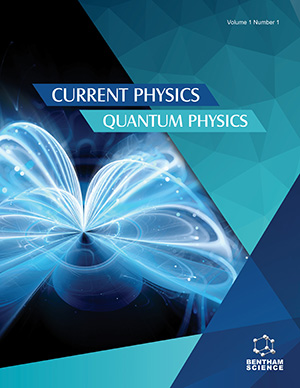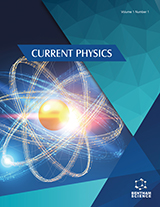About The Section

Quantum Physics
Publishes original research articles, letters, case reports, reviews/mini-reviews and guest edited thematic issues on various topics related to Quantum Physicss.
The QuantumPhysics, a section of the journal Current Physics, publishesoriginal research articles, letters, reviews/mini-reviews and guest-editedphysics issues on various topics related to quantum.
This section is notlimited to a specific aspect of the field but is instead devoted to a widerange of sub-fields in the area. Articles of interdisciplinary nature areparticularly welcome for this section. Basic theoretical developments,applications, novel approaches and experiments are among the topics covered inthe papers. Submissions in the following areas are of special interest to thereaders of this journal:
· Quantum AI
· Quantum Communication
· Quantum Computation
· Quantum Experiments
· Quantum Information
· Quantum Networks
· Quantum Simulations
















DRreceived his Ph.D. degree from the Moscow Institute of Physics and Technology, and later the highest degree of Doctor of Sciences from the Institute of General Physics of the Academy of Sciences of the USSR by the decision of the Scientific Council led by the Nobel Prize winner, academician A.M. Prokhorov. According to the Statute of the Doctor of Sciences degree, this highest degree is awarded only to the most outstanding Ph.D. scientists who founded a new research field of a great interest. Oks worked in Moscow (USSR) as the head of a research unit at the Center for Studying Surfaces and Vacuum, then – at the Ruhr University in Bochum (Germany) as an invited professor, and for the last 30 years – at the Physics Department of the Auburn University (USA) as Professor. He conducted different research studies in the areas of atomic and molecular physics, astrophysics, plasma physics, laser physics, and nonlinear dynamics. He founded/co-founded and developed new research fields, such as intra-Stark spectroscopy (new class of nonlinear optical phenomena in plasmas), masing without inversion (advanced schemes for generating/amplifying coherent microwave radiation), and quantum chaos (nonlinear dynamics in the microscopic world). He also developed a large number of advanced spectroscopic methods for diagnosing various laboratory and astrophysical plasmas – the methods that were then used and are used by many experimental groups around the world.








Tianyu Ye, received his PhD from Beijing University of Posts and Telecommunications (BUPT) in the year of 2010, and now is a professor in Zhejiang Gongshang University. His area of interest is quantum information, secure multiparty quantum computation, quantum and semiquantum cryptography, etc. He has published 80 papers, and has been awarded 'Top 2% of World Ranking of Scientist (the years 2020 and 2021)' by Stanford University and Elsevier.







Dr. Xiao-Qing Luo completed his PhD in Quantum Physics and Quantum Information divisions from the Beijing Computational Science Research Center in 2018. His research is focused on cavity QED, light-matter interactions in the semiconductor quantum wells and quantum dots systems, plasmonics in the subwavelength nanostructures. Dr. Luo has published over 20 internationally refereed journal publications including Nature Communications, NPJ Quantum Information, Nanophotonics, Physical Review Applied/A/B, and Optics Express.



Huai-Yi Xie received his Ph.D. in the Department of Physics from the National Taiwan University in 2009. His current research areas include topological magneto-electric (TME) effect in plasmonics; optical characteristics of molecules near metamaterial or plasmonic composite structures; mathematical physics in dyadic Green's functions of electromagnetic (EM) waves; fundamental physics in optics, electrodynamics, quantum mechanics; and computational physics in optical metrology applied to nanotechnology, biomedical engineering. He is currently employed in the Division of Physics, Institute of Nuclear Energy Research, Taoyuan County, Taiwan.






